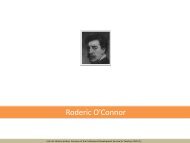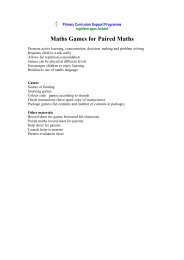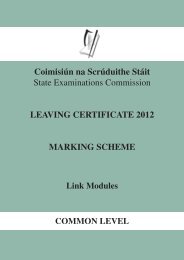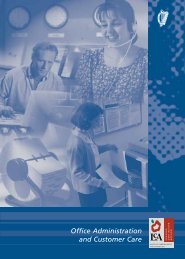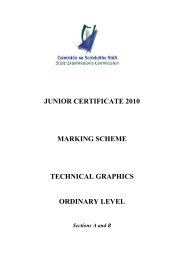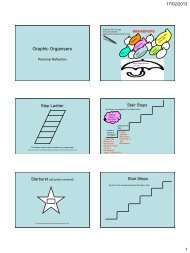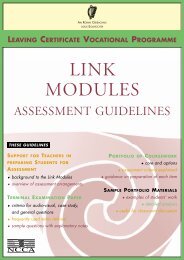What is Four in Balance? - PDST
What is Four in Balance? - PDST
What is Four in Balance? - PDST
Create successful ePaper yourself
Turn your PDF publications into a flip-book with our unique Google optimized e-Paper software.
4 - V<strong>is</strong>ionPedagogical v<strong>is</strong>ions of teachers and school managersVery frequentlyPRIM and SEC school teachersPRIM and SEC school managersFrequentlyFairly frequentlyNow and aga<strong>in</strong>NeverNowIn three years’ timeNowIn three years’ timeKnowledge transfer without ICTKnowledge transfer with ICTKnowledge construction without ICTKnowledge construction with ICTFigure 4.2: Primary and secondary school managers’ and teachers’ views on how teach<strong>in</strong>g <strong>is</strong>organized now and will be organized <strong>in</strong> the future (Van Gennip, 2011a; 2011b)4.3 InnovationTeachers are more likely to use a new ICT application if it reflectstheir current behavior <strong>in</strong> the classroom. If teachers feel that an ICTapplication would cause them to alter their pedagogical approachdrastically, they will be much less likely to use it <strong>in</strong> the near future(Versluijs, 2011). Teachers often reject technology that lies outsidetheir pedagogical comfort zone because they consider it of little valueto them (Underwood, 2009). Gett<strong>in</strong>g teachers to accept applicationsthat will cause them to alter their views of teach<strong>in</strong>g and learn<strong>in</strong>grequires a gradual <strong>in</strong>troduction and ongo<strong>in</strong>g support. A wellbalancedapproach makes it possible to benefit from the added valueof ICT <strong>in</strong> the short term and simultaneously <strong>in</strong>vest <strong>in</strong> <strong>in</strong>novativeapplications that require more time to demonstrate their worth.47



